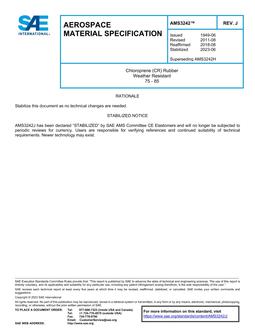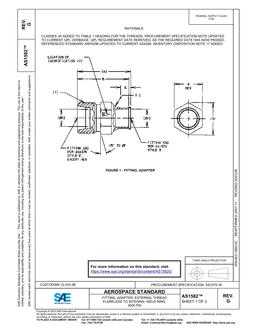SAE J2848/1_201004
Click here to purchase
This SAE recommended practice defines the system and component functions, measurement metrics, testing methodologies for evaluating the functionality and performance of tire pressure systems, and recommended maintenance practices within the known operating environments.This document is applicable to all axle and all wheel combinations for single unit powered vehicles exceeding 7257 kg (16 000 US lb) gross vehicle weight rating (GVWR), and multi-unit vehicle combinations, up to three (3) towed units, which use an SAE J560 connector for power and/or communication, or equivalent successor connector technology, or which use a suitable capacity wireless solution.Examples of included single chassis vehicles would be – utility and delivery vans, tow trucks, rack trucks, buses, recreational vehicles, fuel trucks, trash trucks, dump trucks, cement trucks, and tractors. Examples of combination vehicles using an SAE J560 or successor connector would be – enclosed van trailers, liquid tanker, platform trailer, logger trailers, auto transit trailers, and their associated and compatible towing power units. For combination vehicles including two or more trailers, the dollies are also included. The included vehicles can be newly manufactured vehicles or existing vehicles.These systems are recommended to address all tires in service as originally installed on a vehicle by the OEM and/or specialty vehicle manufacturer, including the vehicle mounted spares, and, for the aftermarket (including replacement or spare parts) are recommended (but optional) to address all tire/rim combinations installed after initial vehicle sale or inuse dates.This document will focus on tire pressure systems of the monitoring type.
Product Details
- Published:
- 04/08/2010
- File Size:
- 1 file , 300 KB
SAE J2848/1_201004
Click here to purchase
This SAE recommended practice defines the system and component functions, measurement metrics, testing methodologies for evaluating the functionality and performance of tire pressure systems, and recommended maintenance practices within the known operating environments.
This document is applicable to all axle and all wheel combinations for single unit powered vehicles exceeding 7257 kg (16 000 US lb) gross vehicle weight rating (GVWR), and multi-unit vehicle combinations, up to three (3) towed units, which use an SAE J560 connector for power and/or communication, or equivalent successor connector technology, or which use a suitable capacity wireless solution.
Examples of included single chassis vehicles would be – utility and delivery vans, tow trucks, rack trucks, buses, recreational vehicles, fuel trucks, trash trucks, dump trucks, cement trucks, and tractors. Examples of combination vehicles using an SAE J560 or successor connector would be – enclosed van trailers, liquid tanker, platform trailer, logger trailers, auto transit trailers, and their associated and compatible towing power units. For combination vehicles including two or more trailers, the dollies are also included. The included vehicles can be newly manufactured vehicles or existing vehicles.
These systems are recommended to address all tires in service as originally installed on a vehicle by the OEM and/or specialty vehicle manufacturer, including the vehicle mounted spares, and, for the aftermarket (including replacement or spare parts) are recommended (but optional) to address all tire/rim combinations installed after initial vehicle sale or in-use dates.
This document will focus on tire pressure systems of the monitoring type.
NOTE: The following systems are not being addressed in this edition of the document. The management system types and more mature/complex versions of maintenance and management types, to include on-board reporting/storage/retrieval data capabilities for both, will be addressed separately by future changes/additions to this document series.
-
Tire Pressure Maintenance Systems – (typically known as ATIS – Automatic Tire Inflation Systems) systems which sense pressure directly or indirectly and maintain tire pressure above a minimum specified threshold, and inform the driver of the system’s activity.
-
Tire Pressure Management (adjustment) Systems (typically known as CTIS – Central Tire Inflation Systems) – systems which sense pressure, plus other pertinent parameters (i.e., vehicle load and speed, tire temperature, etc.) directly or indirectly, and adjust or sustain the pressure at a the level appropriate for the conditions, and inform the driver of the system’s activity.
Product Details
- Published:
- 04/01/2010
- File Size:
- 1 file , 300 KB




